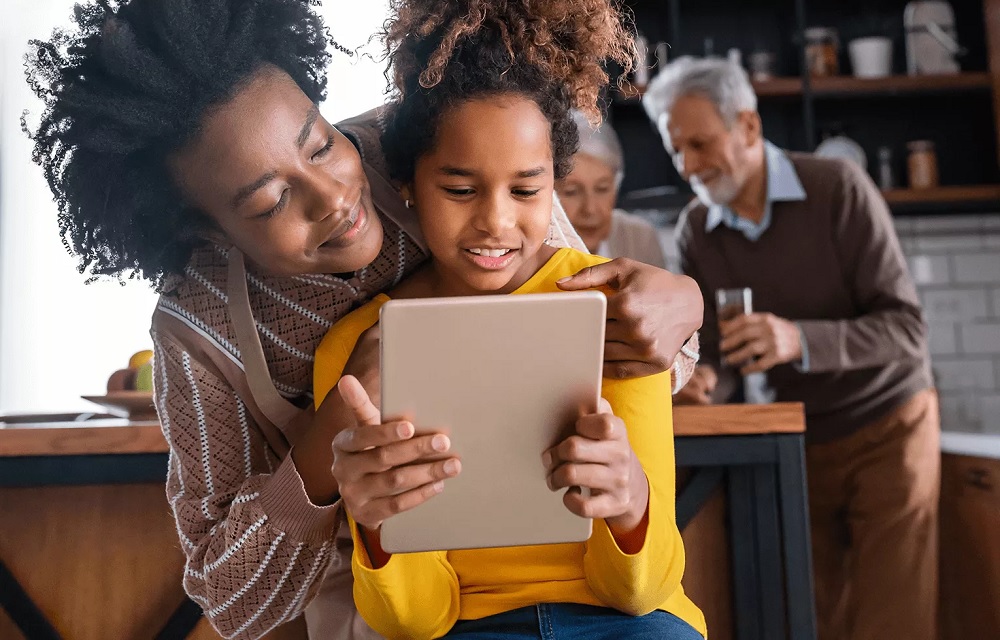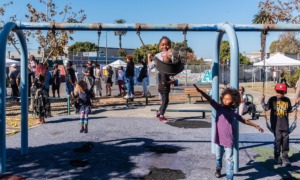Author(s): UNICEF Innocenti and Western Sydney University’s Young and Resilient Research Center
Published: April 2022
Report Intro/Brief:
“Children are spending more time in digital spaces than ever before, using a range of mobile apps, social media platforms, connected devices and online games from ever earlier ages. The recent COVID-19 pandemic has intensified this shift, rapidly moving additional aspects of children’s daily lives online. The growing presence of digital technology in children’s lives requires that we think deeply about its impact. It also demands we consider how we shape that impact best to equip and empower children for success well into their adult years.
Digital experiences can have significant negative impact on children, exposing them to risks or failing to nurture them adequately. Nevertheless, digital experiences also potentially yield enormous benefits for children, enabling them to learn, to create, to develop friendships, and to build worlds. While global efforts to deepen our understanding of the prevalence and impact of digital risks of harm are burgeoning – a development that is both welcome and necessary – less attention has been paid to understanding and optimizing the benefits that digital technology can provide in supporting children’s rights and their well-being.
Benefits here refer not only to the absence of harm, but also to creating additional positive value. How should we recognize the opportunities and benefits of digital technology for children’s well-being? What is the relationship between the design of digital experiences – in particular, play-centred design – and the well-being of children? What guidance and measures can we use to strengthen the design of digital environments to promote positive outcomes for children? And how can we make sure that children’s insights and needs form the foundation of our work in this space? These questions matter for all those who design and promote digital experiences, to keep children safe and happy, and enable positive development and learning. These questions are particularly relevant as the world shifts its attention to emerging digital technologies and experiences, from artificial intelligence (AI) to the metaverse, and seeks to understand their impact on people and society.
To begin to tackle these questions, UNICEF and the LEGO Group initiated the Responsible Innovation in Technology for Children (RITEC) project in partnership with the Young and Resilient Research Centre at Western Sydney University; the CREATE Lab at New York University; the Graduate Center, City University of New York; the University of Sheffield; the Australian Research Council Centre of Excellence for the Digital Child; and the Joan Ganz Cooney Center. The research is funded by the LEGO Foundation. The partnership is an international, multi-stakeholder and cross-sectoral collaboration between organizations that believe the design and development of digital technology should support the rights and well-being of children as a primary objective – and that children should have a prominent voice in making this a reality. This project’s primary objective is to develop, with children from around the world, a framework that maps how the design of children’s digital experiences affects their well-being, and to provide guidance as to how informed design choices can promote positive well-being outcomes.
FINDINGS
The findings of the research, in brief, were:
Well-being is holistic: For children, well-being is physical health and safety but also mental stability and positive emotion. Most importantly, well-being is social, linked to loving others, and being loved by family and friends.
Diversity, equity and inclusion matter: Children experience a range of barriers to digital engagement, ranging from limited internet access to app costs and culturally inappropriate content. Insights from our consultation with children, many from low- or middle-income countries, signal issues yet to be addressed adequately either by research or by industry.
Social connection is key: Exploratory analysis of survey data showed that for children in some countries, engaging in social activities online – with friends, parents and teachers – was positively associated with many aspects of well-being. Using social media was associated with a sense of belonging, stronger peer relationships, and confidence. Parents, caregivers and teachers who engaged positively and supportively with their children’s digital technology use were found to have, overall, a better relationship with their children, though the causal direction is unclear. When asked specifically about play, many children said they have more fun when they are playing with friends. Many games designed by children in the workshops had a prosocial element where they collaborated or helped others. Some children felt safer when playing together.
Safety is a priority: Children want digital content to be appropriate for their age, and for the digital spaces in which they interact not to expose them to violence, inappropriate language and sexual content. Children expressed that they did not appreciate coming across such content unexpectedly, and they want to be able to predict that the content they encounter will not be shocking to them. Children want safeguards in place to ensure they can: manage advertizing, chatting and trolling; socialize with peers of a similar age; and be supported to manage their time. Children’s safety concerns were echoed by parents and flagged by stakeholders as an ongoing challenge.
Creativity is integral: For children, creativity was interlinked with other processes and benefits, from learning to self-confidence. Creativity is not so much a distinct goal or play style, but occurs during an experience or as a by-product of digital play, alongside other outcomes.
Play is diverse: From competition to collaboration, children told us they play in many different ways, and that different play experiences contribute in distinct ways to their well-being. Parents and stakeholders recognize this and aim to support a wide variety of play, including quieter and reflective play.
Digital play has limits: Children mentioned downsides to digital play experiences, from isolation to boredom and negative affect. In contrast, physical games were generally seen as more adaptable, more social and more physically engaging, points also echoed by parents. There are clear opportunities for industry to innovate and improve digital play.”
>>> CLICK HERE to see all of Youth Today’s REPORT LIBRARY




























